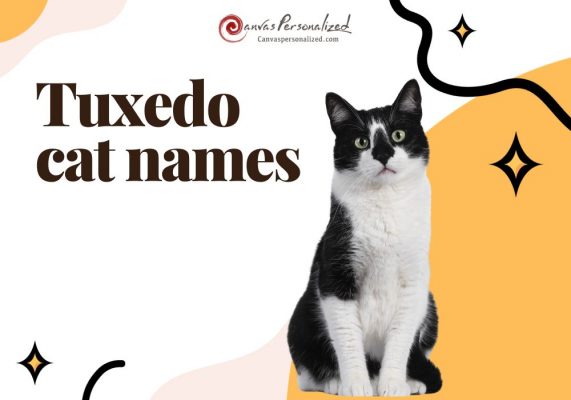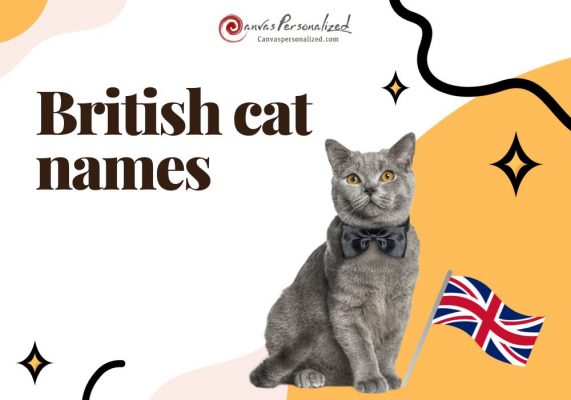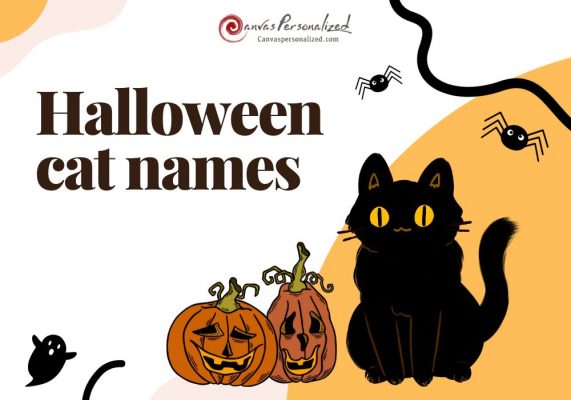Cat lovers have been smitten with the British Shorthair cat for years due to the breed’s endearing appearance and laid-back temperament. Because of its unique round face and fluffy coat, this breed has quickly risen to the ranks of the world’s most famous felines.
Whether you’re seeking a cuddly companion or a low-maintenance pet, the British Shorthair kitten is trusted to exceed your expectations and become a beloved family member. If you want to learn more about the most fascinating cat, check out this article from Canvas Personalized.
1. British Shorthair Cat Breed Overview
| Other names | British Blue |
| Origin | Rome |
| Weight | About 7-17 pounds |
| Length | About 22-25 inches |
| Height | About 12-14 inches |
| Lifespan | About 14-20 years |
| Coat Color | white, black, blue, red, cream, smoke, silver, golden, cameo, tabby, tortoiseshell, calico, and bi-color |
| Coat Length | Very dense and short. Not woolly or double-coated. |
| Eye Color | Blue, Copper, Gold, Odd-eyed |
History Of The British Shorthair Cat Breed
British Shorthairs have a long and notable history that can be traced back to the Roman Empire, making them one of the oldest cat breeds. Some researchers believe that Roman soldiers were the first to keep this species as a pet. They took cats with them when invading Britain so that the rat problem could be controlled.
After several generations of breeding with local feral cats, a new breed appeared: the British Shorthair. The hunting skills of these cats were highly respected throughout the Middle Ages, and many farmers kept them as friends to protect their fields from rodents.
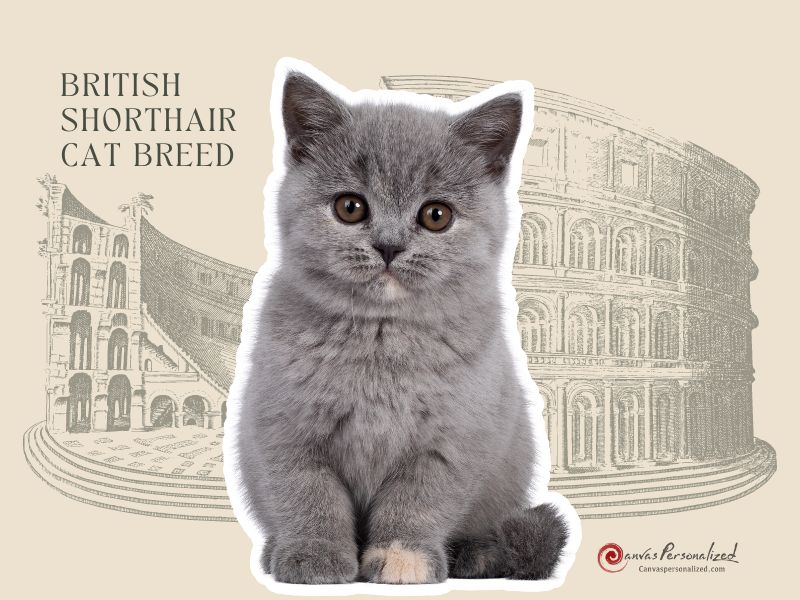
Many people consider Harrison Wier, the first professional cat breeder, to be the “father” of this particular breed. He is renowned as the “Father of the Cat Fancy” in cat fancy history. In addition to becoming the first professional breeder, he also set the rules for the first cat show, which took place in Britain in 1871.
Even more impressively, Harrison took the typical British street cat and, through an intensive breeding program, turned it into the prestigious pedigreed breed he named British. Shortly after the Persian was brought to Britain, it became the most popular breed there. The Brits fell in love with their new, now-pedigreed breed.

While the number of British Blue cats dramatically decreased during World War II, strategies were made to bring them back after the war via breeding programs. Today, the British Shorthair is a popular breed that is well-known for its amiable temperament, as well as its unique round face and stocky appearance.
In sum, the British Blue is a well-liked breed with a lengthy, almost two-thousand-year history. As time goes on, its fame only grows. It’s consistently ranked as one of the most popular types of felines worldwide.
What Does A British Blue Cat Look Like?
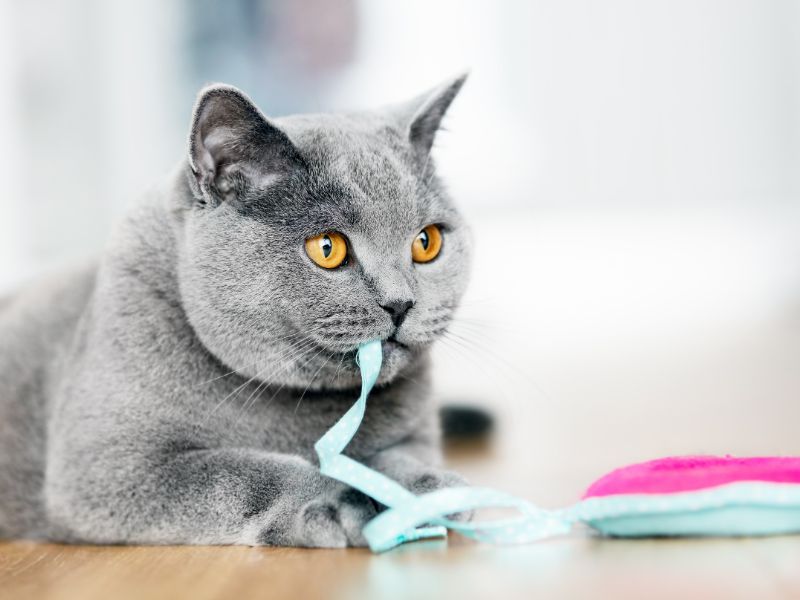
The British Blue is a large-to-medium-sized cat breed. They have a strong, muscular physique and a dense, plush coat that is comfortable to the touch. As a general rule, female British shorthairs are smaller than males. The breed is easily recognizable by its distinctive round head, which has chubby cheeks, a firm chin, medium-sized ears, and big, round eyes.
These cats come in a variety of colors or patterns, such as white, black, blue, red, cream, smoky, silver, golden, cameo, tabby, tortoiseshell, calico, and bi-color. They have short, dense fur that is easy to care for and requires little brushing. However, they are not hypoallergenic cats, which means they may cause allergic reactions in some people. If you are allergic to cats, consider other breeds more suitable for you.
2. British Shorthairs Cat Personality and Temperament
| Intelligence | High |
| Friendliness | Medium |
| Kid-Friendly | High |
| Pet-Friendly | High |
| Affection Level | High |
| Playfulness | Medium |
| Tendency to Vocalize | Low |
| Energy Level | Medium |
| Exercise Needs | Medium |
| Amount of Shedding | Medium |
Among cat breeds, the British Shorthair is well regarded for its laid-back and outgoing character. They are a low-stress, versatile type that gets along well with everyone and can adapt to everything from little flats to lavish palaces.
The British Blue is a breed of cat renowned for its laziness and penchant for comfort. This cheerful breed enjoys both long stretches of couch time and energetic playtime.
While they are not very energetic or demanding, they do like to go out and play. Also, they are known to seek out their owners for a cuddle since they crave human interaction.
In addition to being calm and affectionate, British Blues are also known for being intelligent and independent. They frequently behave well and are easy to train, making them excellent for families with children.
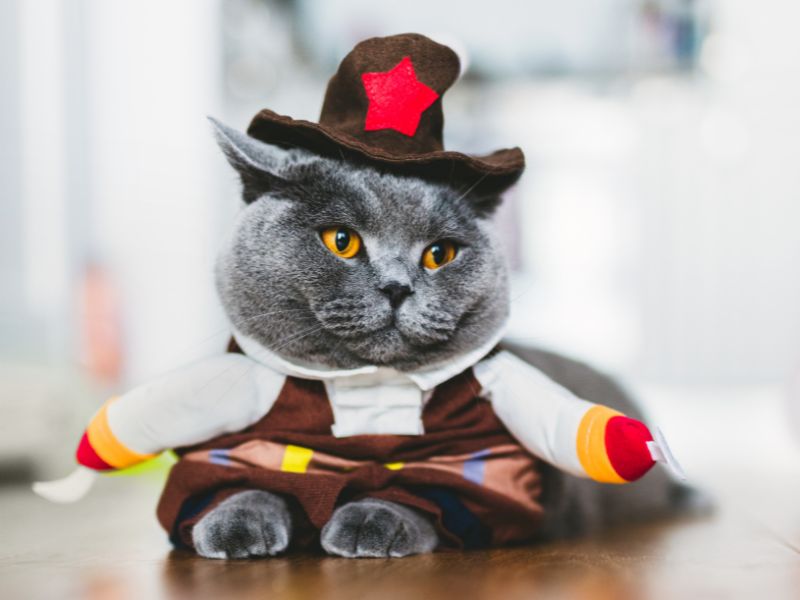
However, they may also have some British shorthair behavior problems that you should be aware of. Some of these issues are:
- Scratching furniture or walls: Although this is a regular cat activity, the scratches it leaves behind can be costly to repair. Nail clipping and the provision of scratching posts can help prevent this problem.
- Spraying urine or marking territory: This is a way for your pet to communicate with other cats or to release tension or worry. This is avoidable if you get your cat spayed or neutered, keep the litter box clean, and give your cat plenty of playtime and human interaction.
- Aggression or biting: The emotions of fear, pain, boredom, or frustration can all play a role in this. You can avoid this by exposing your British Shorthair kitten to other cats and people at an early age, playing gently with them, and avoiding anything that can distress them.
- Overeating or obesity: Causes include inactivity, boredom, and tension. A healthy diet, portion control, and increased activity levels in your cat can help you avoid this problem.
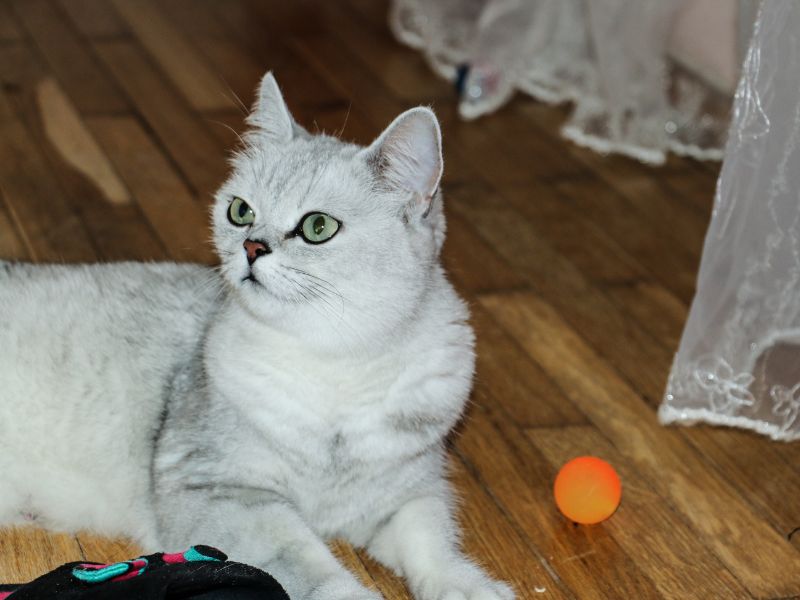
3. British Blues Care
Grooming Care
In accordance with its name, the British Shorthair is defined as a short coat that requires little treatment. But if she isn’t combed frequently, even a Shorthair cat’s coat may become tangled up and knotted.
Your British Blue loves to be pampered with a gentle, slicker brush at least once a week, which will keep their fur soft and shiny. When the seasons change, so does their coat. They will shed their winter fur in the spring, and you will need to comb them more often to avoid a hairy mess in your home.
Nails and Ears Care
Your British Shorthair cat needs regular pampering for its nails and ears. Trim their nails weekly with a cat nail clipper, and check their ears for any signs of dirt or infection. You can gently clean the ears with a cotton swab and a pet ear cleaner but never insert it too deeply. If you notice any redness or foul smell in their ears, take them to the vet immediately.
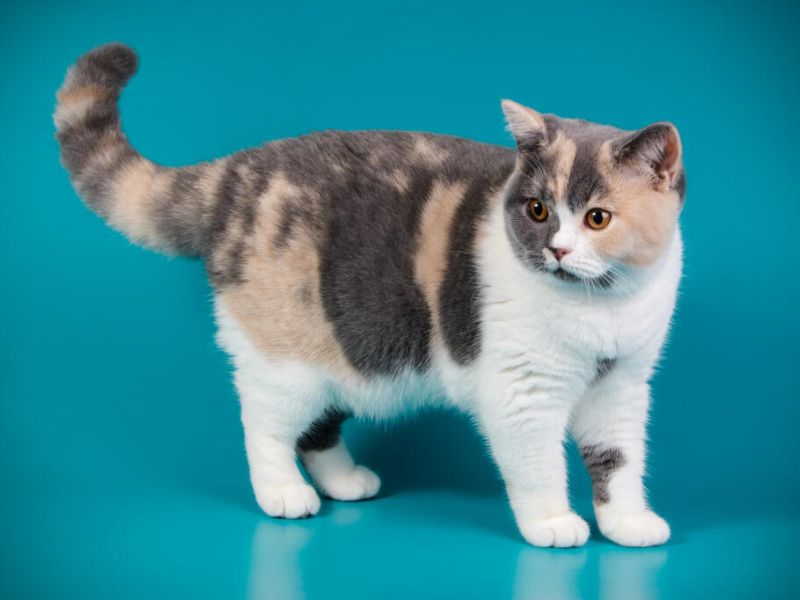
Exercise
British Shorthairs never lose their playful spirit, even when they grow up. They are not too hyper or too lazy, but just right. They don’t need any particular exercise as long as you let them run around the house and play with them a few times a day.
Use feather wands, toy mice, or any other toys your British Shorthair cat likes to keep them occupied. Cat trees, cat-friendly bookshelves, and kitty condos are just a few examples of great places to provide your cat with a place to climb and perch.
Scratching provides cats with exercise and mental stimulation. Place both vertical scratchers (such as tall poles or cat trees) and horizontal scratchers in your home to ensure your cat has plenty of options for appropriate scratching.
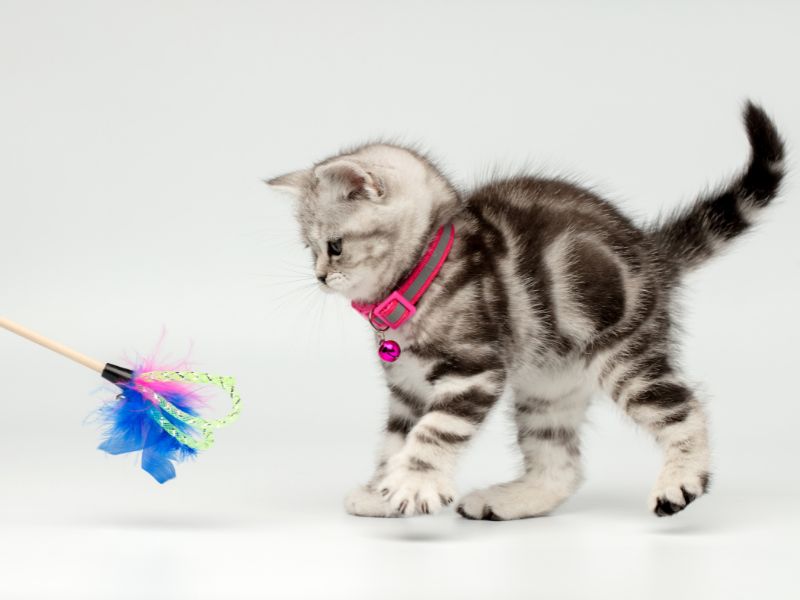
Diet and Nutrition
When it comes to nourishment, every cat has its own preferences and requirements. However, cats are carnivores with different eating needs for 41 other nutrients.
Because the quantity of essential nutrients varies with age, environment, and general health, it’s not unexpected that a developing, energetic British Shorthair kitten needs a different balance of nutrients in their food than a less active senior cat. Feeding the appropriate amount to achieve and sustain an “optimal body condition” in accordance with feeding standards and accommodating individual preferences about wet or dry meal preparation are other aspects to consider.
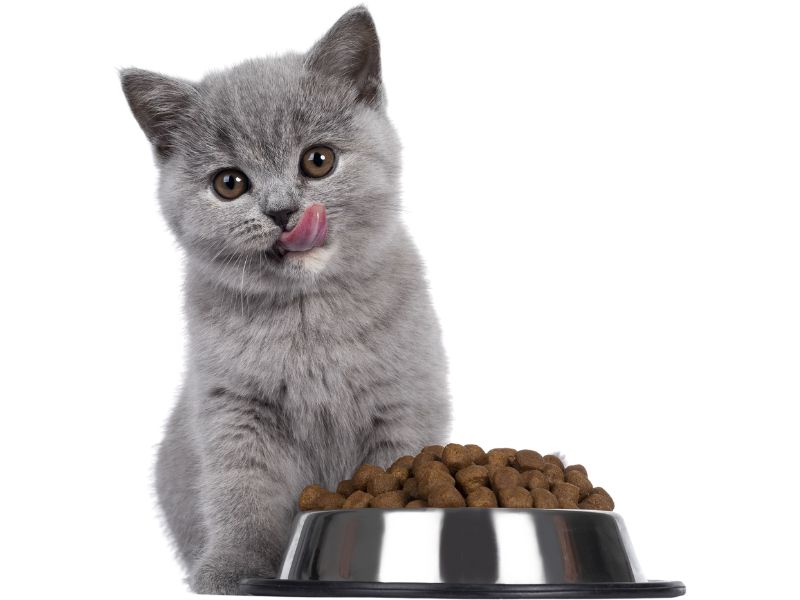
Common Health Problems
The British Shorthair cat is a solid and muscular breed that can live 14-20 years. But like any other cat, they can have some health issues. You should spay or neuter your cat. Additionally, it’s essential to talk to your veterinarian to establish a comprehensive vaccine plan for your British Shorthair.
British shorthairs have a low chance of getting inherited diseases. However, they are more prone to heart problems, especially hypertrophic cardiomyopathy. This is a condition that makes their heart muscle thicker and weaker. Any cat can get sick, injured, or have a health problem. That’s why taking your cat to the vet at least once a year is essential to check their health and catch any issues early.
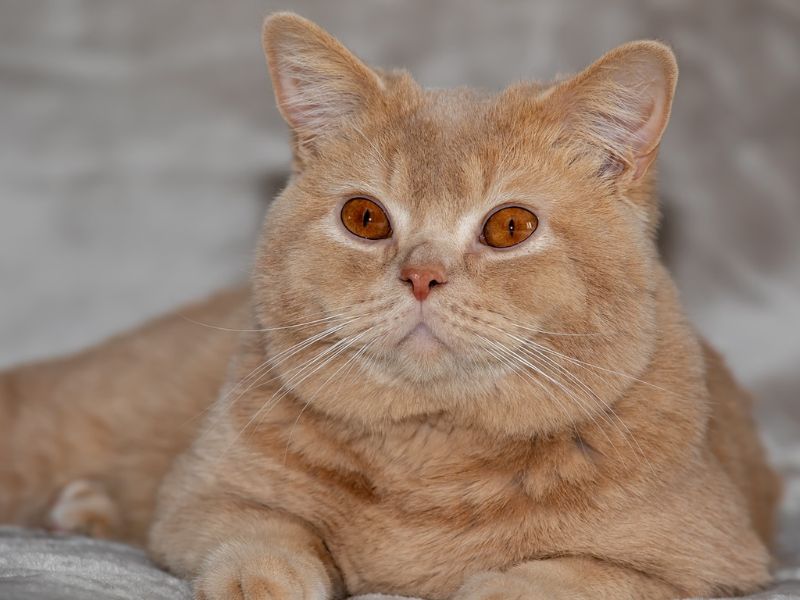
4. Are British Shorthair Good for Families?
Companions such as these cats are elegant, wise, and loving. Even though he isn’t much of a lap cat, he still likes to be right next to you on the couch. When compared to males, females have a more serious tone. These mellow felines get along well with dogs and are patient with kids but detest being hauled around. As a result, it’s essential that teenagers be taught to treat cats with respect.
In addition, a British Blue kitten is an excellent option for families since it is sociable, kind, and easygoing. Hence, it’s easy to understand why this breed has become so popular with families, with its unique look, calm attitude, and friendly temperament.

5. How Much is a British Shorthair Cat?
British Shorthair kitten for Free
Unfortunately, even royal cats have to find new homes when their owners pass away, get divorced, or fall on hard times and end up surrendering their feline companions to the local animal shelter. Look for a British Blue kitten in need of a home by contacting breeders or browsing websites like Petfinder, Adopt-a-Pet.com, and the Fanciers Breeder Referral List.
Whether you get your British Shorthair from a pet store, a shelter, or a rescue organization, it’s crucial to have a good contract outlining your responsibilities and theirs. If your state has “pet lemon laws,” make sure you and the person from whom you buy the cat are both aware of your rights and remedies.
If you adopt a British Shorthair, whether a kitten or an adult, you should take it to the vet immediately. Avoiding numerous health problems is possible thanks to your veterinarian’s ability to identify issues and work with you to create a preventive plan.
British Shorthair cat for Adoption: $50 – $200
It might be difficult to locate adoptable cats of this breed in certain places. These cats are seldom seen in the wild and are instead only available from specialized breeders. In most cases, cat owners may return their pets to their breeder if they are no longer able to care for them, which means that rescues seldom have to take in cats.
However, you shouldn’t expect to spend more on a cat of this breed than on any other cat at a shelter. In most cases, you may expect to pay between $50 and $200 at a shelter to adopt one of these cats. This is less expensive than going to a breeder, but you have to be fortunate to discover one at a rescue center.
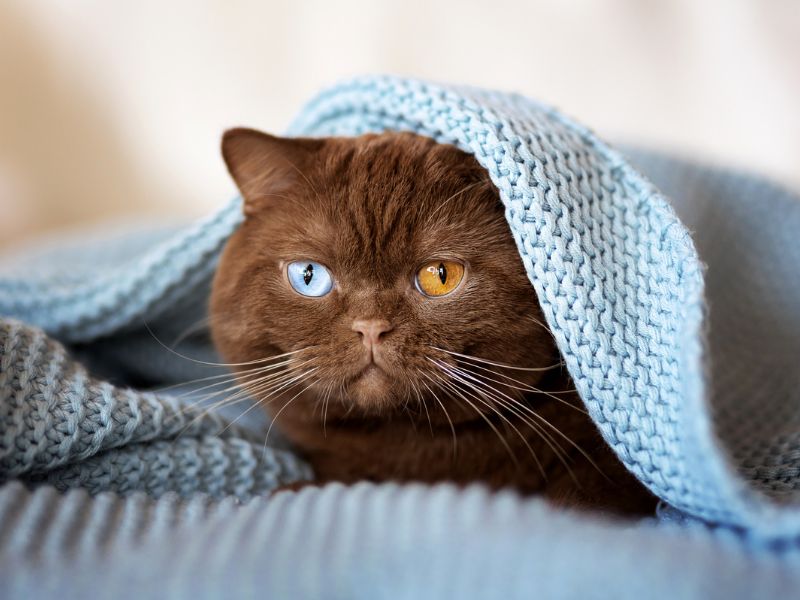
British Shorthair cat from Breeders: $800 – $3,000
Buying from a breeder is often the most expensive option, but it also comes with many benefits. Breeders take good care of their kittens and socialize them well before they are ready for adoption. They also take their kittens to the vet early and start the necessary vaccines.
These steps make the kittens healthier and more adaptable to their new homes. You may pay more upfront for a British Blue cat from a breeder, but you may save money in the long run. The British shorthair cat price depends on the quality and pedigree of the cat, as well as the reputation and location of the breeder.
If you want to find a reputable breeder of this charming feline, you can check the websites of the Cat Fanciers Association and the International Cat Association. They both have directories of active British shorthair breeders that you can browse.
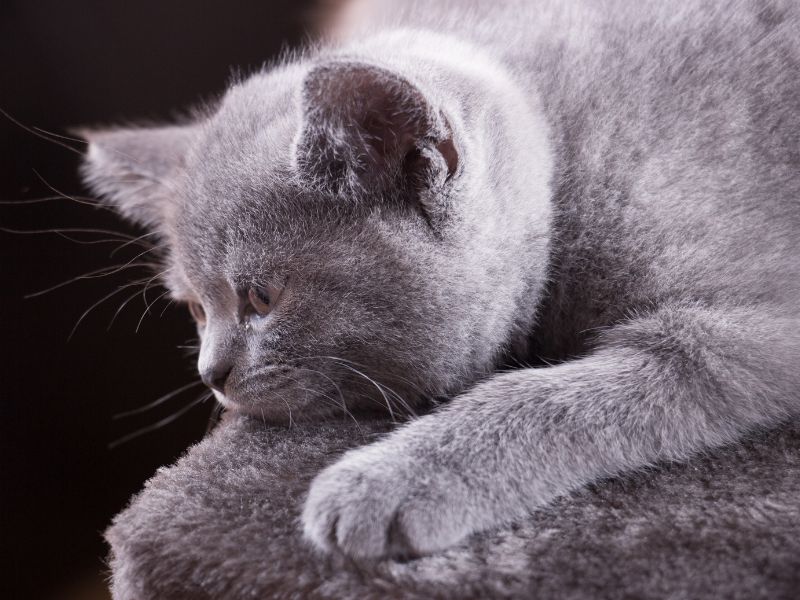
>> More from Canvas Personalized:
- Exploring the Balinese Cat Breed: A Fascinating Guide
- Discover the Somali Cat Breed: Agile and Alluring
To sum up, the British Shorthair cat is an excellent choice if you want an adorable household pet. Therefore, why not take advantage of all the joy and kindness that this beautiful breed has to deliver by adopting one today? Read more articles on Canvas Personalized if you love finding more helpful information about cat breeds and how to train them!





